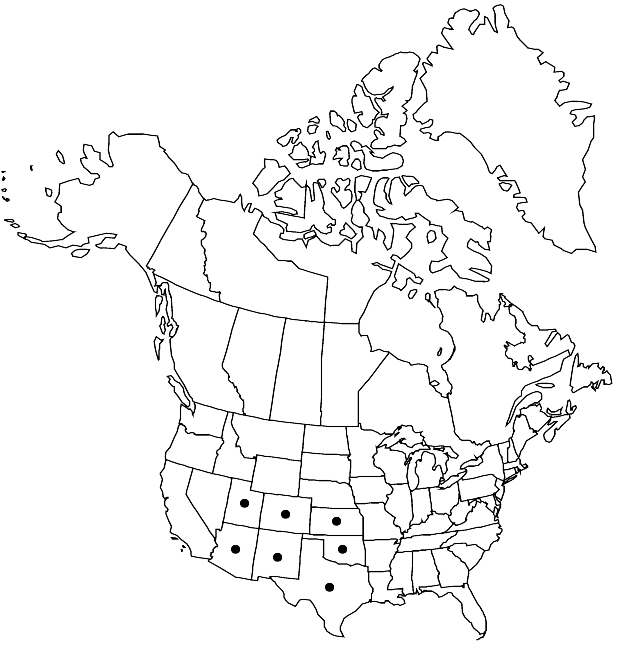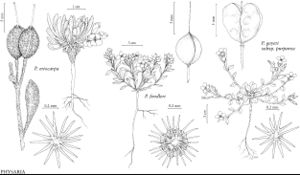Physaria fendleri
Novon 12: 323. 2002.
Perennials; caudex branched, (sometimes woody at base); densely (silvery) pubescent, trichomes (sessile or short-stalked), several-rayed, rays not furcate, fused (webbed) ca. 1/2 their length, (tuberculate throughout or tubercles scarce or absent over center). Stems several from base, erect or laterally decumbent, (usually unbranched), (0.3–)0.5–2.5(–4) dm. Basal leaves: blade linear to somewhat elliptic, 1–4(–8) cm, margins entire or coarsely dentate. Cauline leaves (shortly petiolate); blade usually linear to narrowly oblanceolate, rarely elliptic to rhombic, 0.5–2.5 cm, (base narrowing to petiole), margins entire or remotely dentate (sometimes involute). Racemes loose to somewhat dense. Fruiting pedicels (divaricate-spreading to erect, usually straight or slightly curved, occasionally sigmoid), 8–20(–40) mm. Flowers: sepals elliptic to oblong, 5–8 mm, (lateral pair not saccate, median pair often thickened apically, ± cucullate); petals (usually orange or orange-yellow at junction of blade and claw, sometimes also with orange guidelines), obdeltate to obovate, 8–12 mm, (claw relatively short). Fruits globose, broadly ellipsoid, or ovoid, not or slightly inflated, 5–8 mm, (firm, apex usually acute); valves (not retaining seeds after dehiscence, often reddish in age), glabrous throughout; replum as wide as or wider than fruit; ovules (12–)20–32(–40) per ovary; style (2–)3–6 mm. Seeds flattened. 2n = 12, 14, 24.
Phenology: Flowering Mar–May.
Habitat: Limestone outcrops, gypseous hills, gravels, sandy washes, rocky slopes, bluffs, shallow drainage areas, plains and desert shrub areas
Elevation: 100-2000 m
Distribution

Ariz., Colo., Kans., N.Mex., Okla., Tex., Utah, Mexico (Chihuahua, Coahuila, Nuevo León).
Discussion
In dry areas, Physaria fendleri may flower following suitable rains at any time of the year.
Selected References
None.
